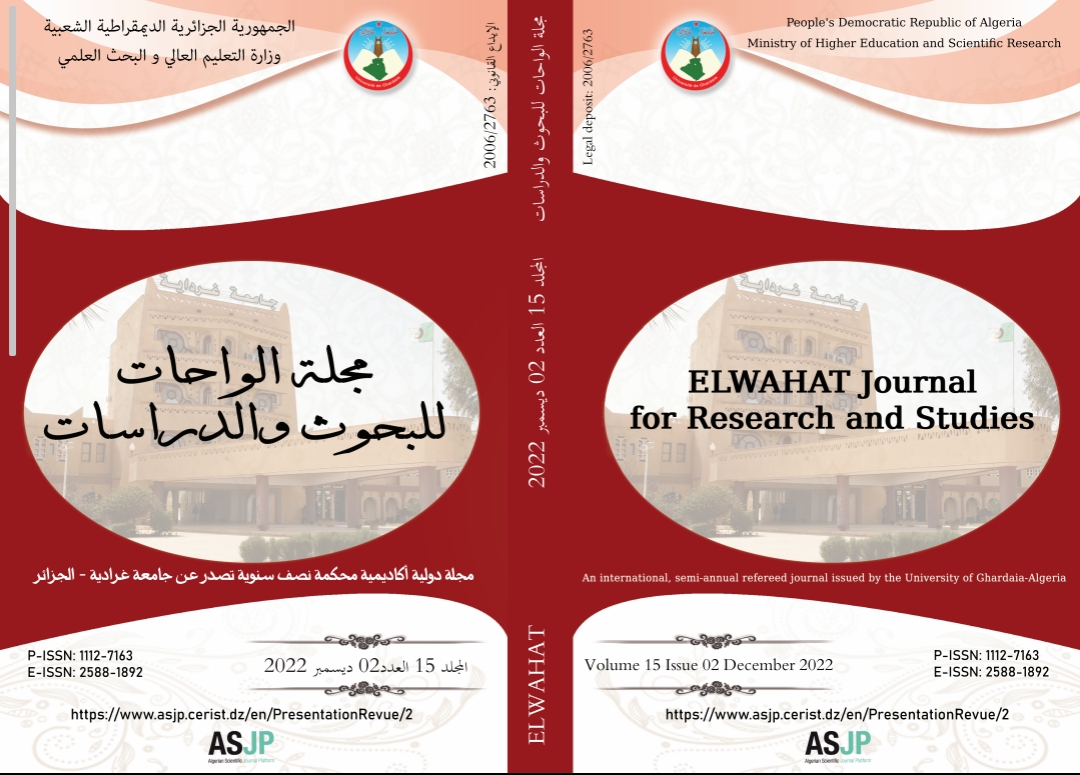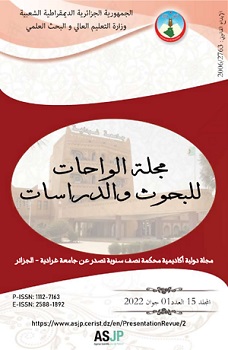دور التطوير المالي في الرابط انفتاح-نمو: دراسة قياسية باستخدام نماذج بانل لبلدان مينا
الملخص
ملخص:
استهدفت هذه الدراسة قياس أثر الانفتاح الاقتصادي على النمو الاقتصادي لعينة من بلدان منطقة الشرق الأوسط وشمال إفريقيا خلال الفترة 1990 – 2018. ولتحقيق هذا الهدف تم الاعتماد على نموذج الآثار العشوائية الديناميكي باستخدام شعاع الانحدار الذاتي لبيانات السلاسل الزمنية المقطعية (VAR Panel Data)، وخلصت الدراسة إلى أن التطوير المالي يؤثر طرديا في معدل النمو الاقتصادي في حين تبين أن درجة الانفتاح التجاري تؤثر بطريقة غير مباشرة على النمو الاقتصادي (عن طريق التطوير المالي كتغير وسيط). لنستنتج في الأخير أن التأثير على النمو يتم تقويته بوجود نظام مالي متطور وجب على حكومات البلدان محل الدراسة العمل على تحديثه لتعزيز النمو المستدام.
كلمات دالة : انفتاح تجاري , نمو اقتصادي, تطوير مالي, نماذج بانل, بلدان مينا.
Abstract:
This Study Aims To Measure The Impact Of Economic Openness On Economic Growth For Eight Countries In The Middle East And North Africa During 2018-1990. This Study Also Empirically Investigates Whether Financial Development Is Associated With A Stronger Or Weaker Trade Openness–Growth Relationship. To Achieve This Objective, We Used The VAR Panel Data Approach, By Applying The Dynamic Random Effects Model. The Results Of The Study Showed That The Increase In The Degree Of Trade Openness Indirectly Leads To Increase The Rate Of Economic Growth In The Countries Under Study. These Results Has Been Obtained After Controlling The Following Variables: Financial Sector Development And Gross Domestic Investment. To Increase The Positive Impact Of Trade Openness On Economic Growth, The Study Suggests That Governments Of These Countries Must Promote An Advanced Financial System In Order To Strength A Sustainable Growth.
Key Words: Trade Openness, Economic Growth, Financial Development, Panel Models, MENAالمراجع
Ades, A., & Glaeser, E. (1999). Evidence on Growth, Increasing Returns and the. Quarterly Journal of Economics, 114, 1025-1046.
Aghion, P., Howitt, P., & Mayor-Foulkes, D. (2005). The Effect of Financial Development on Convergence: Theory and Evidence. Quarterly Journal of Economics, 120, 173– 222.
Alesina, A., Spolaore, E., & Wacziarg, R. (2000). Economic Integration and Political Disintegration. American Economic Review, 90, 1276-1296.
Asamoah, L., Emmanuel , K., & Eric Amoo , B. (2019). Trade openness, FDI and economic growth in sub-Saharan Africa: do institutions matter?. Transnational Corporations Review, 11(1), 65-79.
Beck, T., & Levine, R. (2004). Stock Markets, Banks, and Growth: Panel Evidence. Journal of Banking and Finance, 28, 423–442.
Fung, M. (2009). Financial development and economic growth: convergence or divergence? J. Int. Money Financ, 28(01), 56–67.
Hsiao, C. (2007). Panel data analysis—advantages and challenges. Wise Working Paper Series, 16, 1-22.
Huang, L., & Chang,, S. (2013). revisit the nexus of trade openness and GDP growth:. The Journal of International Trade & Economic, 1-21.
Levine, R. (1997). Financial Development and Economic Growth: Views and Agenda. Journal of Economic Literature, 35, 688–726.
Levine, R., & Zervos, S. (1998). Stock Markets, Bank, and Economic Growth. American Economic Review, 88, 537–558.
Osei, M., & Kim, J. (2020). Foreign direct investment and economic growth : Is more financial development better ? Economic Modelling, 93, 154–161.
Sarkar, P. (2008). Trade Openness and Growth: Is There Any Link? Journal of Economic Issues, 42, 763-785.
Steve, D., & Jane, G. (2004). Trade openness and growth: who benefits?. Oxford review of economic policy, 20(1), 38-56.
Wachtel, P. (2001). Growth and Finance: What Do We Know and How Do We Know It? International Finance, 43, 353–362.
Yanikkaya, H. (2003). Trade Openness and Economic Growth: ACross-Countries Empirical Investigation. Journal of Development Economics, 72, 57-89.






